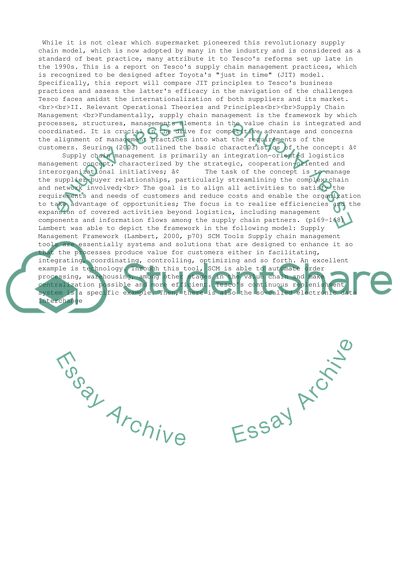Cite this document
(“TESCO and the JIT Philosophy Essay Example | Topics and Well Written Essays - 3250 words”, n.d.)
Retrieved from https://studentshare.org/management/1394330-tesco-and-the-jit-philosophy
Retrieved from https://studentshare.org/management/1394330-tesco-and-the-jit-philosophy
(TESCO and the JIT Philosophy Essay Example | Topics and Well Written Essays - 3250 Words)
https://studentshare.org/management/1394330-tesco-and-the-jit-philosophy.
https://studentshare.org/management/1394330-tesco-and-the-jit-philosophy.
“TESCO and the JIT Philosophy Essay Example | Topics and Well Written Essays - 3250 Words”, n.d. https://studentshare.org/management/1394330-tesco-and-the-jit-philosophy.


